I recently went on a walking tour of a neighborhood in Berkeley filled with nice gates and fences. We discussed wood quality, construction techniques and workmanship. Here are some of the cream of the crop.
The first gate was hand forged by the artist for her house, with oak leaf details and hammered copper sheets. She happened to be home when we were there and she showed us the soon to be added oak leaf handles.
The next fence was a bit groovy for my tastes but was of interesting construction. The louver direction changed mid-way down the fence for maximum privacy depending on the direction one was walking down the sidewalk. This might be a good fence for windy areas, where the breeze needs to be slowed down. Sometimes a solid fence that blocks wind completely will create a small calm air pocket but also more violent wind turbulence further into the garden as the air rises over the fence and then swirls back down into the garden. Slowing the wind down, but still allowing it to pass through, can create a calmer wind pattern throughout the garden.
This gate was beautifully combined with a rock wall, very unusual combination. We figured out it was constructed by sinking a pressure-treated post into the rock wall and then covering the top of the post with panels to match the gate. Nice trick.
Here's a nice modernization of the picket fence:
Lovely Japanese styled fence and gate. My favorite details on this fence are the column bases. The concrete footings are beveled, edged in brass and made of colored concrete. Nice detail!
Another carefully detailed fence and gate - beveled edges on the timbers, beautifully grained wood, countersunk bolts and concrete footings that become design elements.
But to the side of the gate, is a newer fence that appears to be by a different workman and of a much lesser quality. The boards are full of knots and not lined up evenly at the top and they used ugly screws that create a wobbly line too. Bleh.
This circle fence is pretty charming but I do wish that the gate and arbor had lined up to create a circle too instead of an oval. Also, one detail in the fence is going to lead to problems down the line. The boards are pinned by the 1x2 stringers in such a way as to create little "compost bins" where debris and water can collect. If those tiny little pockets aren't cleaned out regularly the bottom of the boards will begin to rot.
Now onto the truly creme de la creme of gates, those created by Julian Hodges. We lucked out on our tour when Julian himself happened up while we were admiring one of his gates. He went along with us and talked about his construction methods. He's a very charming, funny man and it was so wonderful to listen to him discuss his work. The following gates and fences are all by Julian Hodges.
The wood for this fence and arbor are all of extremely dense, fine-grained old growth redwood, sourced by Julian. This is some of the last of its kind. You can't find wood like this anymore.
In leu of the high quality redwood that Julian usually works with but can no longer find, he is starting to use Red Cedar. It is a nice honey color as you can see from this gate.
We were checking out the curvy gate in front of this house when the owner invited us in and through his backyard to look at the back gate that matched the front door. A very nice owner and a beautiful garden with interesting sculpture.
The next gate was constructed to match the tudor house with a rustic charred finish and wrought iron arch.
The last gate and fence we visited were beautifully simple. High quality wood and construction shine through. The only ornamentation are the classic Julian Hodges quatrefoils carved into the door.
The hardware on the fence is only visible from the backside. And you can easily see the contrast between the quality of construction between the front and side fences. I'm sure not many can afford a Julian Hodge's fence completely surrounding their property!

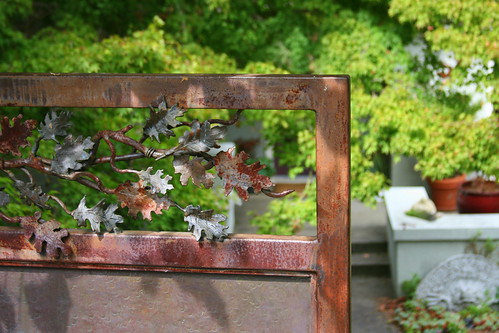
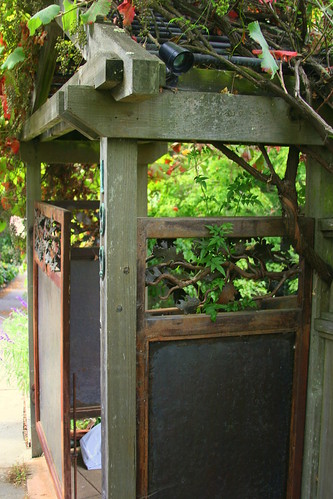
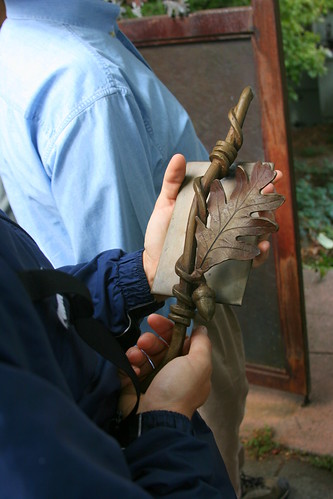
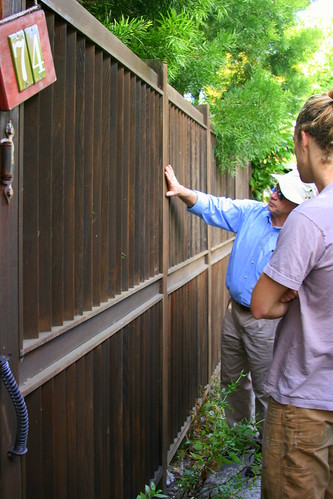
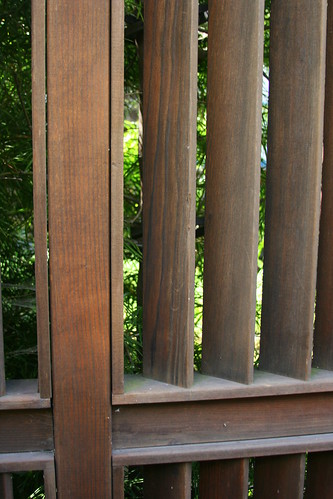
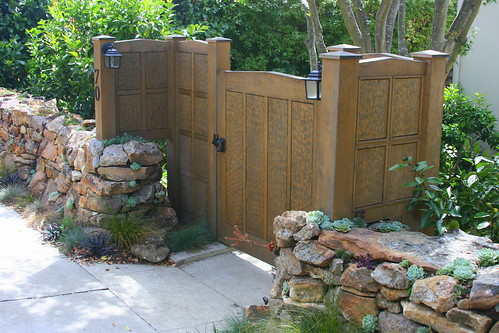

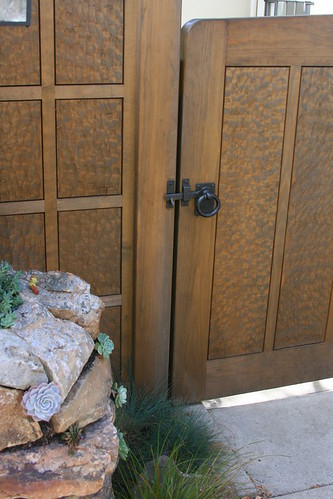
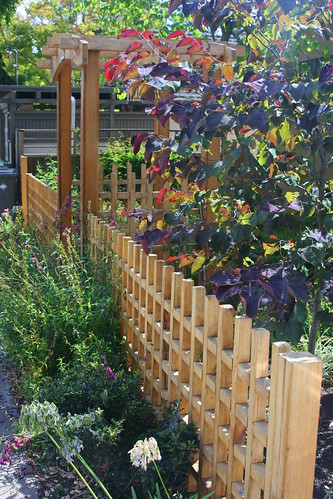

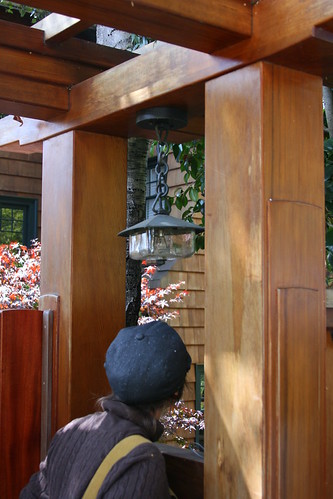
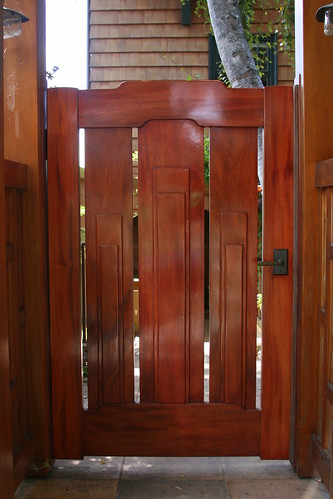

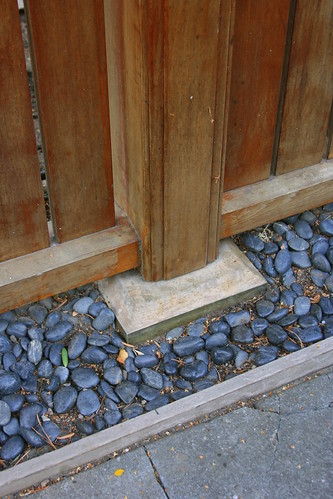
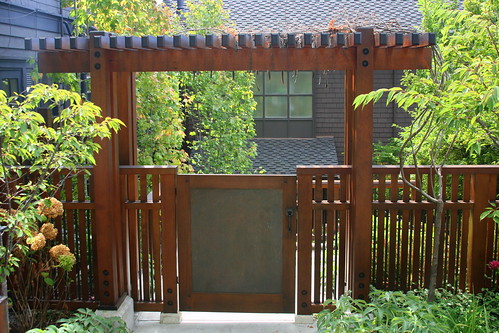
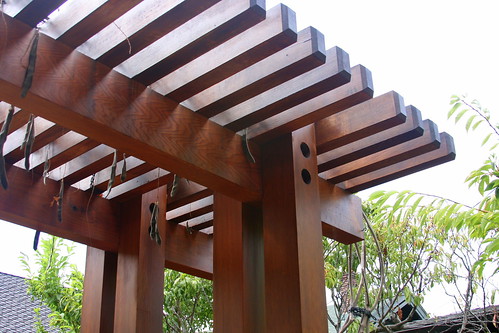
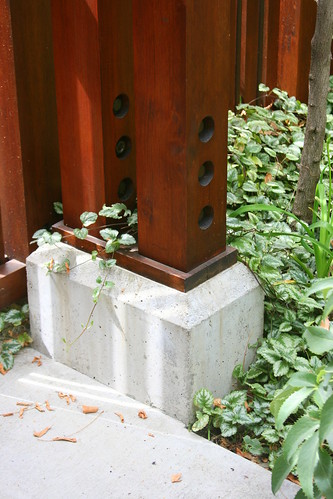
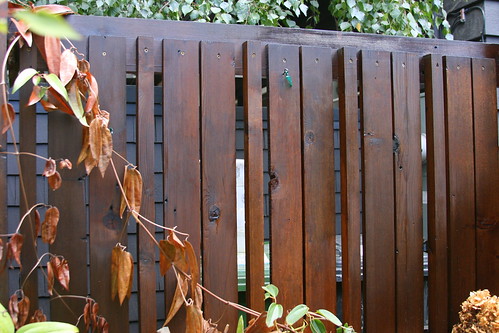
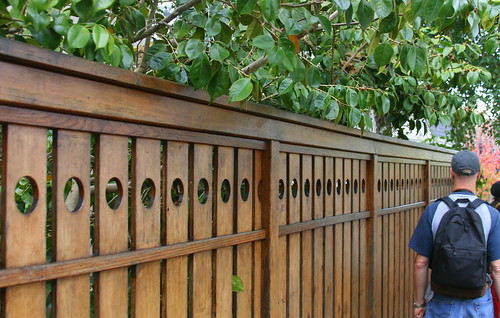
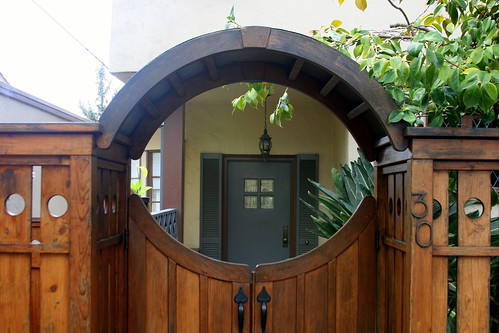
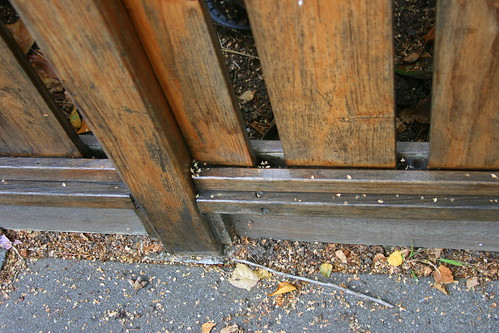
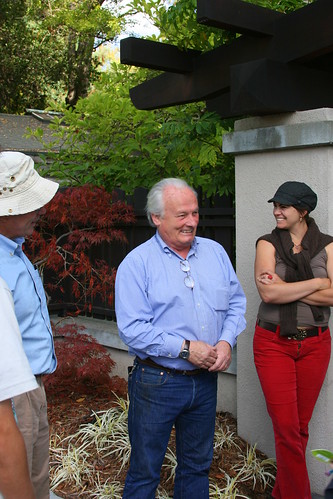
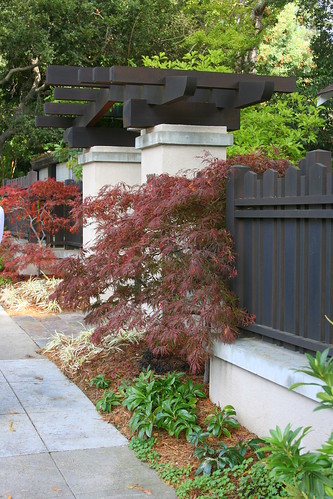

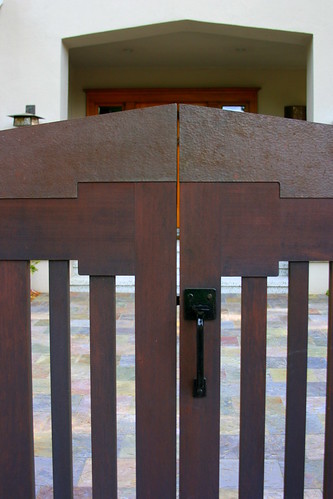
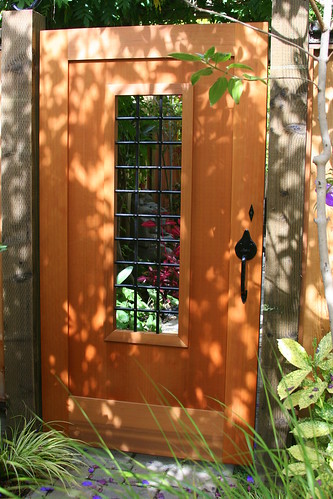
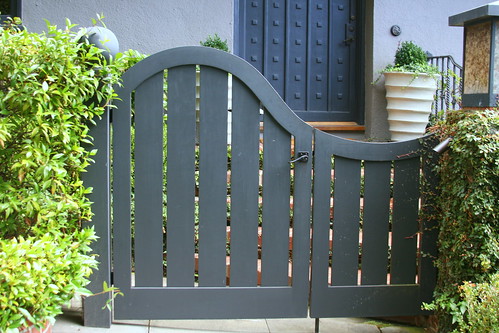

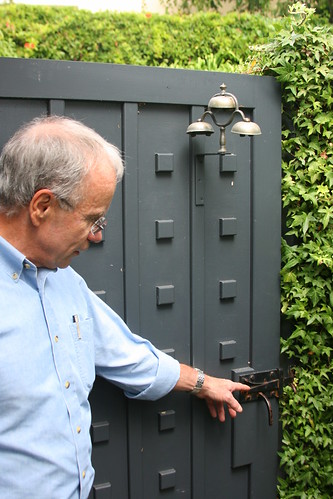
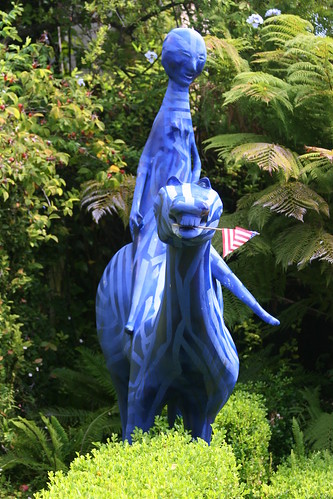
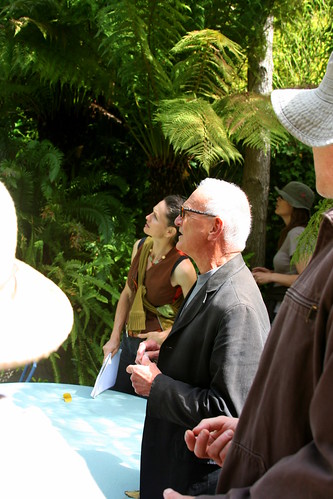
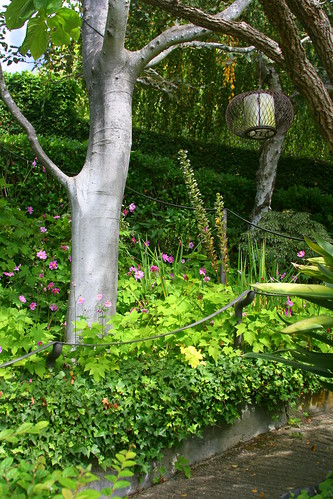

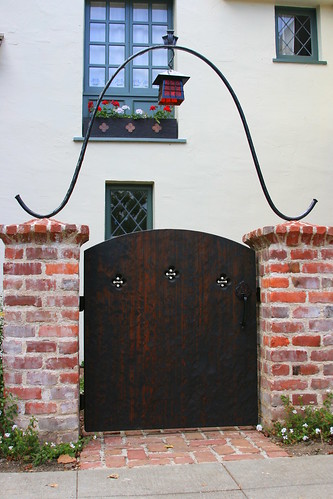

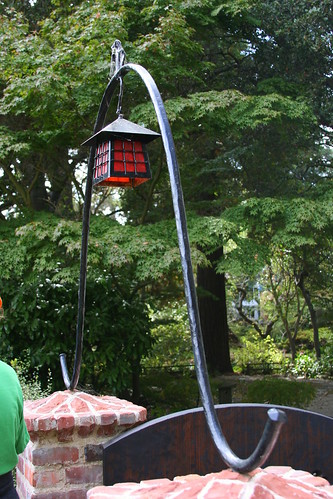
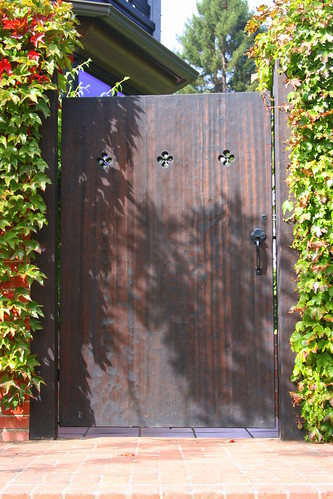
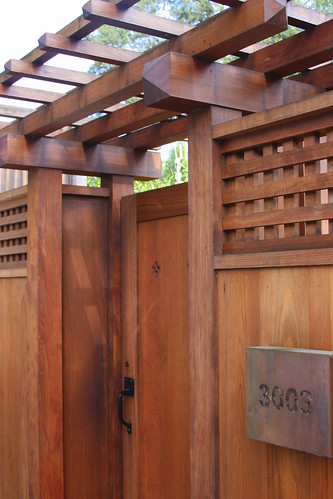

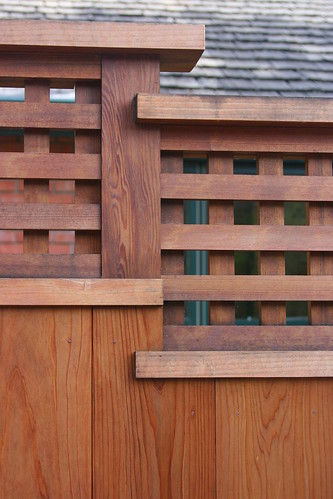


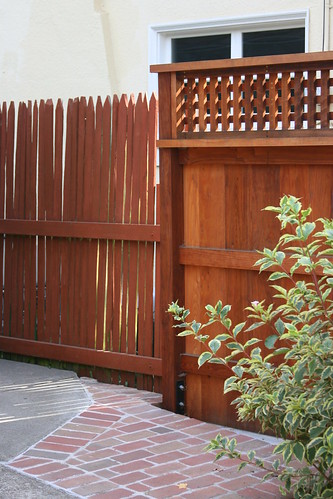
I now hate my chain link gate more than ever.
ReplyDeleteDanger Garden - Ha! Yeah, my fence looks basically like the left hand side of the last photo. That's why I appreciate a good fast growing vine!
ReplyDeleteThat is some amazing crafstmanship. The density of the grain of the old-growth redwood...oohlala. Termites eat the new wood like candy. My crap fences are so annoying, but then that's what screen plants are for, right?
ReplyDeleteI am glad these are on the other coast. I would be embarassed by my Home Depot pressured treated, oh so boring panels.
ReplyDeleteThis comment has been removed by a blog administrator.
ReplyDeleteThis comment has been removed by a blog administrator.
ReplyDeleteThis comment has been removed by a blog administrator.
ReplyDeleteThis comment has been removed by a blog administrator.
ReplyDeletethank you
ReplyDelete